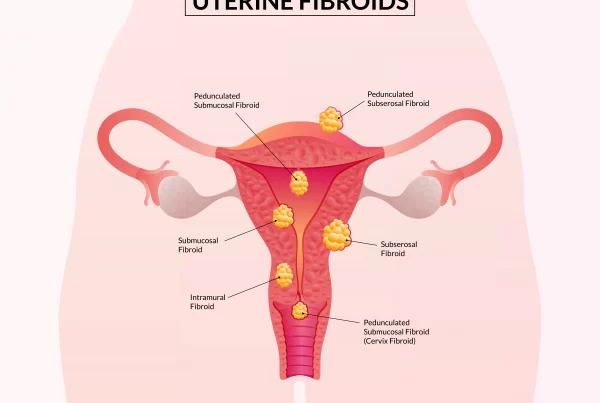Ovarian cysts are sacs which develop in a woman’s ovary. They can vary in appearance and type. Some cysts are fluid-filled while others contain solid areas; they may be formed by one or multiple sacs and can occur in one or both ovaries.
A large majority of ovarian cysts are functional cysts, which occur in many women during their menstrual cycle. These functional cysts occur and disappear naturally without any symptoms and do not require treatment.
However, some ovarian cysts are pathological cysts, which are abnormal cysts developed from different tissues in the ovary and require treatment. In some cases, an ovarian cyst may be a tumour, and if the cyst is large, may develop complications.
The common types of pathological cysts are:

Endometriotic cysts: Formed from endometrial tissue, which develop outside the uterus and attach to the ovaries, and are normally filled with brownish stale blood.
Dermoid cysts: Growths containing sebum and components of hair, bone and brain tissues.
Mucinous Cystadenoma: An ovarian tumour containing a mucinous substance.
Serous Cystadenoma: A benign ovarian tumour containing clear fluid.
Do I Have Ovarian Cysts?
While most ovarian cysts do not cause any impact, some women may experience symptoms when the growths become too large, get twisted, rupture or become infected.
Common signs and symptoms of ovarian cysts include:
- Pain in lower back or thighs
- Bloatedness or pressure in the abdominal area
- Increased frequency of urination
- Painful periods
- Painful intercourse
- Painful bowel movements or feeling of passing bowels despite an empty colon
- Abnormal menstruation (bleeding in between periods)
Other non-specific symptoms include malaise, fatigue, loss of weight and appetite. These symptoms are usually associated with advanced ovarian cancer.
How are Ovarian Cysts Diagnosed?
Due to a lack of obvious symptoms, most ovarian cysts are diagnosed by chance. Your gynaecologist will be able to detect an ovarian cyst during a pelvic or abdominal examination during a routine gynae screening. An ultrasound scan can reveal the location, size and nature of the cyst, as well as the possibility of malignancy.
If the cysts are persistent, symptomatic or suspected to be malignant, the gynaecologist may perform a CT scan and blood tests for further investigations.
How are Ovarian Cysts Treated?
Treatment of ovarian cysts depends on the size, nature and symptoms experienced.
Patients with smaller cysts that do not appear malignant may be monitored to see whether the cysts increase in size over a period of time. Those with endometriotic cysts can experience severe pain during menstruation or have issues with fertility – this requires treatment. Patients with large cysts also require treatment to prevent symptoms such as abnormal bleeding and pain.
Treatment of ovarian cysts is done either by abdominal surgery or laparoscopy (keyhole surgery). A laparoscopic surgery offers the advantages of having a smaller scar, lesser pain, a shorter hospital stay and faster recovery.
However, cysts that are very large, contain solid masses or appear malignant may have to be removed by open surgery. These cysts will be removed as a whole without rupturing them as much as possible.



